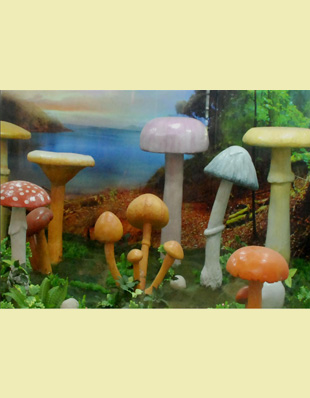
Fungi
Fungi are achlorophyllus, heterotrophic, eukaryotic organisations. They are as distinct from algae and from plants as they are from animals. The study of fungi is called 'Mycology'. They occur in all types of climate. They are primarily terrestrial but some are living in water. Most of the fungi have multi-cellular structures but some are unicellular in nature. All fungi are heterotropic, in obtaining their food, they function either as saprobes (living on organisms) or as mutualistic symbionts or as parasites (living on other organisms). The fungi reproduce asexually (without involving the fusion of sex cells) as well as sexually. They affect us directly by destroying our food, fabrics, leather and other similar articles, by causing many common and dangerous diseases of man, animals and plants. On the contrary, preparation of bread, wines, bears, etc., which involve fermentation cannot be complete without these tiny micro-organisms. Use of fungi in the preparation of many antibiotics, organic acids, vitamins, hormones, enzymes and drugs, is notable. The amazing 'Toadstool fungus', and 'Bracket fungus' are kept in the reserve collection.


